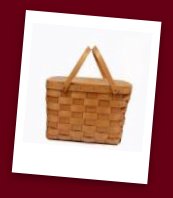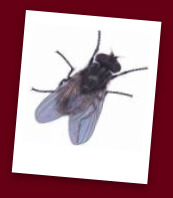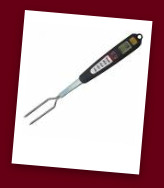|
Picnic and Pot Luck
|
|||
|
|
 You’re organizing the group picnic, and everyone is going to bring something. Picnic food safety is probably the last thing on your mind. But the following tips might remind you to consider some things about what to do with all that good food.
You’re organizing the group picnic, and everyone is going to bring something. Picnic food safety is probably the last thing on your mind. But the following tips might remind you to consider some things about what to do with all that good food.
There are a lot of variables at a picnic or pot luck: where it is held, whether a kitchen is used, who is cooking the food, how long the food sits in the car or on the table. We’ll stick with the basics here. Perhaps asking yourself these three questions will bring other questions and considerations to mind.
I'm been asked by friends and family, based on my experience, "What is the best grill for me?" And it's not an easy answer... until now... There's a great site GrillSavvy.com which can give you an independent, "true skinny" on a wide variety of grills.
|
|---|
 Who is coming to this picnic or potluck? Depending on where you host your event, you might have some unexpected (or maybe expected) visitors – flies, bees, ants, and other bugs. They can land on your food and either eat it themselves or just stop to visit, bringing with them germs they picked up from the last thing their legs touched (i.e., dog poop, trash can, dirty water, etc.). A fly who likes your family-recipe potato salad can’t eat it the way you do. He spits on it, creating goo that he can suck back up. And since he has no bladder control, he probably will leave some of his feces on it as well!
Who is coming to this picnic or potluck? Depending on where you host your event, you might have some unexpected (or maybe expected) visitors – flies, bees, ants, and other bugs. They can land on your food and either eat it themselves or just stop to visit, bringing with them germs they picked up from the last thing their legs touched (i.e., dog poop, trash can, dirty water, etc.). A fly who likes your family-recipe potato salad can’t eat it the way you do. He spits on it, creating goo that he can suck back up. And since he has no bladder control, he probably will leave some of his feces on it as well!
If it’s summer, you might be dealing with bugs both indoors and outdoors. Don’t forget the proverbial ants, attracted to the food spread out on your blanket for your afternoon meal in the park.
Keeping your food safe from bugs can be a challenge. There are screens, repellents and good old fly swatters that can help. But being smart about how you serve the food can make a big difference. Try to serve it in a kitchen or other room where guests can pile their plates and then stroll outside to eat. Try to keep the food on tables rather than on the ground. If you’re in a public park, pick a spot away from trash cans. Any food that’s dropped should be picked up and put into a trash container as soon as possible. And try to keep covers on your beverages as much as you can.- How long is the food going to sit there? Remember that germs (bacteria) like to grow in warmer temperatures. A nice hot day for a company picnic (94 °F,34 °C) can be comfortable for your invited guests, but let your food sit out long enough and germs will grow like crazy. That fried chicken you picked up from the deli may be delicious, but the leftovers – the ones that sat out for three hours while you won the volleyball tournament – can make your work week miserable if you pack them in your lunch the next day. The best rule of thumb? Discard all foods that have been sitting out for two hours or more, even if they still look and smell good.
The highest risk foods include some picnic, potluck and BBQ favorites. Meats such as burgers, ribs, steaks, and chicken (fried or grilled), are all high risk foods that should be cooked completely (see our cooking section to find out more info). But that’s probably no surprise to you. On the other hand, cut watermelon, a favorite summertime treat, can actually grow E-coli which can make you sick. Prepared salads such as macaroni, potato, and cole slaw can also be dangerous if left at warm temperatures very long. Use the same rule of thumb: throw them away if they sit out for more than two hours. (No, don’t try to salvage them. For more info on how food spoils, click here.)
Since it’s your party we’re talking about, what about planning the event so that the food doesn’t need to sit out all afternoon? You might start by setting out soft drinks and chips/appetizers for a certain amount of time. When the food is ready, make that the time for all to eat; give everybody a good hour or so, and then begin packing away. If you’re at the park or some other all-outside location, cover the high-risk food, pack it into iced coolers (not into the back of your hot car in August!), and then go play volleyball or Frisbee golf.
 Who’s the chef here? One important way to make food safe is to make sure it is cooked properly. At a BBQ, one or two people are usually responsible to cook the food on the grill or fire. Make sure the chefs know how to prepare the food in the safest (as well as tastiest) ways. We cover this in our cooking section (click here), so details aren’t too important here, but here is one thing you might want to consider: getting a good thermometer that can tell you exactly how hot the food is on the inside.
Who’s the chef here? One important way to make food safe is to make sure it is cooked properly. At a BBQ, one or two people are usually responsible to cook the food on the grill or fire. Make sure the chefs know how to prepare the food in the safest (as well as tastiest) ways. We cover this in our cooking section (click here), so details aren’t too important here, but here is one thing you might want to consider: getting a good thermometer that can tell you exactly how hot the food is on the inside.
Many accomplished BBQ chefs scoff at the very idea of having a thermometer to check the temperatures of their beautifully grilled meats! But their grilling expertise is not compromised in any way if they use an impressive thermometer to double-check things. And for the rookie BBQ chef, it should be a staple. We recommend a food thermometer that has actual degree indicators on it, not just “well done, medium, rare.” One of the newest innovations is a grill fork with a built-in thermometer. Either type will work. The most important thing is to make sure that the thermometer is USED.
To discover restaurant Red Flags that tell you, “Don’t eat here!” click here.
To go to Food-Safety-and-You.com’s home page, click here.
To learn what to look out for when you go to the deli to get that fried chicken, click here.
To visit our cooking section, click here.
To review – if you must – how food spoils, click here.






